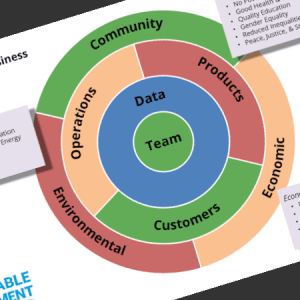Over the years, the slow growth of Shadow IT has really been the canary in the coal mine, the formative stages of an organization's Digital Transformation - people using Information and Technology to automate internal processes, get closer to the customer, and transform products and services.
Decentralized IT is a growing trend – pushing decision making and investments closer to the customer. This can be a powerful component of your digital transformation change when done well, as different areas of your business are better able to bring innovative, high-value products and services to the market. The counter, however, is that decentralized IT leads to duplication and fragmentation for little benefit; IT is merely a cost of doing business, typically not a differentiator – and therefore something that can and should be centralized.
The conversation has more impact when we change our words a bit – from IT (as in “the IT Department”) to “Information and Technology” (the application of these two concepts to move the business forward); where are those investments happening?
When you take a step back, it’s clear that Information and Technology permeate the business – they are everywhere! Often referred to as Shadow IT, this rambling inventory of unsustainable tech assets can be a frustration for IT managers. But these aren’t frivolous or “fun” systems – the range (and inherent importance) of investment and functionality is broad and fascinating …
- Finance – These folks are heavy users of consolidation and reporting tools, with their departmental collection of super users, data analysts, & information designers. Still, we know much of Corporate America runs on spreadsheets – some of which are amazing in their sophistication and complexity. These are genuine custom software developments – complex systems in their own right – and wholly owned by the Finance team.
- Sales and Marketing – This is typically where ownership of CRM systems is held – after all, these folks are the primary owners of customer and channel relationships. But this is also (usually) where web sites and eCommerce systems are proposed, funded, built, and managed.
- Operations – Big users of the company’s ERP systems when it comes to planning, purchasing, manufacturing, and transportation. Here you will also find savvy technologists that are looking at material handling systems, sensors for operational efficiencies, and highly automated manufacturing machines (that themselves need to connect via the Internet to their OEM masters)
- Product Development – Ah, the Engineering team – long time users of the most complex and expensive workstations (to drive some fascinating and sophisticated Design & Build software). A demanding group of end-users – and as sensors, firmware, and data become part of your business’ products & services, we are seeing software developers (firmware, web apps, analytics, data science) making their way into this group.
- Human Resources – Another critical set of technology users – from the mundane (but oh so important) Payroll system, to the highly strategic Performance and Talent Management systems that ensure the future of the organization.
- IT – Of course, there’s the IT team – responsible for “keeping the trains running” (phones, desktops, internal networks,), this is typically where the specialists sit. Complex and interconnected systems and data flows (ERP configurations, system-to-system integrations, and reporting & analytics teams) are built and managed here.
Have you ever been asked what the company spends on IT – the classic “IT as a % of revenue” metric? Typically, folks will report their spend in the IT Department – specifically, the costs that run through that particular cost center. For context, we look to sector averages for what “good” looks like. As an example, the Industrial Manufacturing sector has a traditional metric for IT budgets where “good” (average) looks like ~2% of revenue.
This can be a useful comparison, but we should be asking how much the company spends on Information and Technology in total, regardless of whose cost center it sits in (corporate code for “who controls the spend”). A more informative metric would be Digital spend across all of these functional areas.
I strongly doubt that the traditional sector averages include those dollars in the “magic” 2% figure, but if I want to understand the real impact of Information and Technology on my business, shouldn’t I look at everything?
Why Do You Ask?
This is not meant to be a rant against Shadow IT – quite the contrary. Over the years, the slow growth of Shadow IT has been the canary in the coal mine, the formative stages of an organization’s Digital Strategy. People in your company are using Information and Technology to automate internal processes, get closer to the customer, and transform products and services – and that is a great thing. However, there are familiar sources of frustration – islands of automation, too many versions of the truth, a lack of integration – that your team must manage.
If you intend to deliver a genuine digital transformation, the answers to these challenges should not be simply an exercise in budget control. A better approach would be to understand your level of investment (dollars, time, and attention) in these two essential business enablers and value creators (Information and Technology).
It’s not about gathering and controlling these resources under a single department, focused on leveraging spend across the company to minimize costs.
Better to focus on the real question – how do Information and Technology drive the strategic objectives of the company? And – are we sharing the information and leveraging the investment across the various functional areas to maximize ROI?
Drive a better answer to these questions, and “decentralized digital” will become a [growth-oriented] strategic weapon, and not a [cost-focused] budget concern.
26 November, 2017






Comments (0)